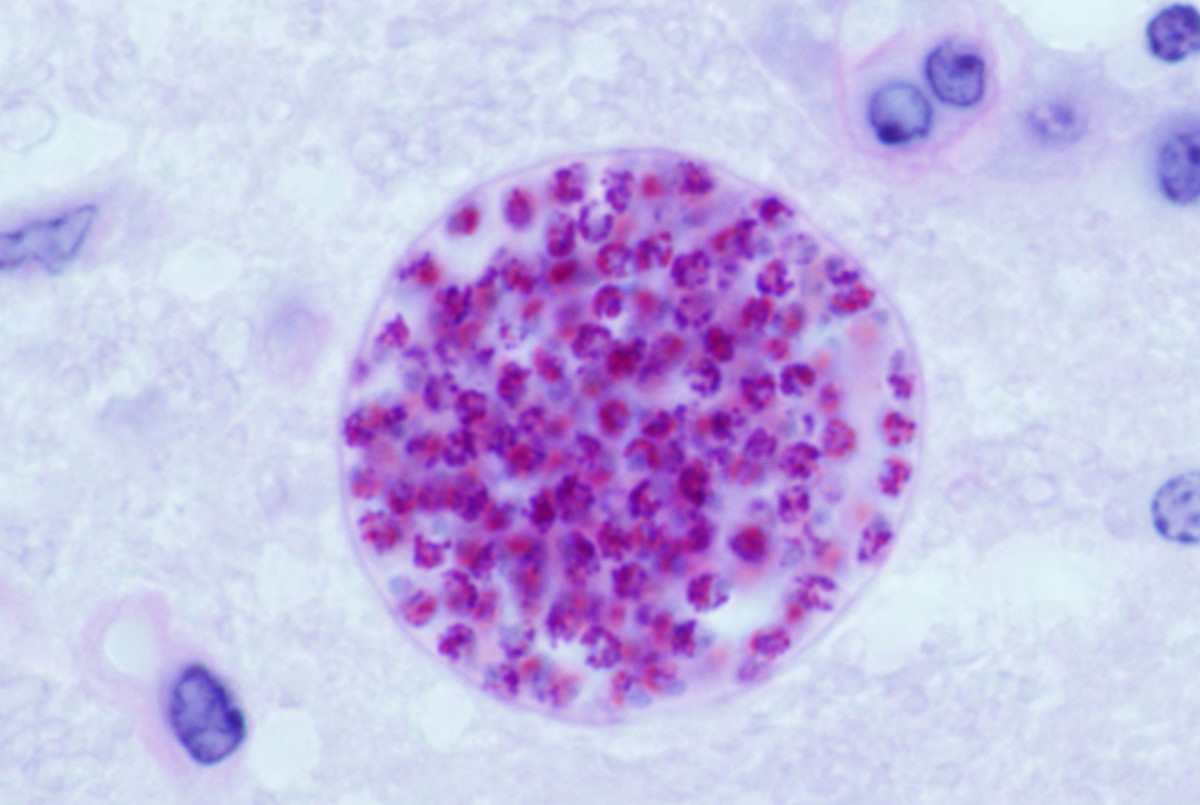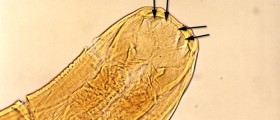
Congenital toxoplasmosis is a form of a parasitic disease affecting unborn babies. It is blamed for various detrimental structural and functional abnormalities. This medical issue occurs if the mother contracts the parasite Toxplasma gondii during pregnancy, or latent toxoplasmosis reactivates.
It is estimated that congenital toxoplasmosis affects around 400-4,000 children in the United States each year. Consequences are detrimental because most children suffer from mental retardation, epilepsy and lose their vision permanently.
Causes of Toxoplasmosis and Transmission
Toxoplasmosis is actually a parasitic infection caused by Toxoplasma gondii. The definitive host of the parasite is the cat although there are other carriers and potential sources of the infection including birds, other mammals and humans as well.
It we investigate parasite's life cycle, it comprises 3 stages, tachyzoite, bradyzoite and sporozoite. In cases of congenital toxoplasmosis tachyzoite parasite invades the baby's cells, replicates inside and leads to all health issues that may occur. Although practically each and every organ can be affected, parasites are highly likely to invade muscles (heart muscle as well), liver, spleen, lymph nodes and central nervous system. Other two forms of the parasite are not blamed for damaging effects. Sporozoite is found in carrier animals and develop after the sexual stage of the parasite's life cycle while bradyzoites are a part of tissues cysts, the structures that form when the infection has progressed.
Primary hosts of the parasites, both domestic and feral cats, release Toxoplasma gondii oocysts in their feces. These oocysts may easily sporulate and become infectious after only one day or they become capable of initiating infection after several weeks. This period is determined by environmental conditions.
There are three ways to contract the parasite. Firstly, in the majority of cases Toxplasma gondii is introduced into our bodies via consumption of raw/inadequately cooked infected meat. Pork and mutton are common sources of the parasite. It is also possible to contract the parasite by eating other undercooked food that have been in close contact with infected meat. The second way of transmission is connected with oocysts expelled from the cats that can be found in a litter boxes or may easily contaminate the soil in the garden along with all the fruits and vegetables present there. If these are not washed properly prior to consumption, the parasite is easily introduced into the body. Finally, we have congenital toxoplasmosis. In this case the parasite first affects the mother and then, via the placenta enters the blood stream of the fetus being distributed to different organs and causing detrimental damage to developing organs/organ systems. This form of the disease may develop if the woman contracts the parasite for the first time in her life (acute/primary Toxoplasmosis) or if the parasitic disease occurred before pregnancy, but it reactivates during the pregnancy because of certain health issues which contribute to weakening of the immune system.Congenital Toxoplasmosis - Clinical Manifestations
When the baby affected by Toxoplasma gondii during pregnancy is born, doctors may easily confirm the condition due to the presence of the classic triad of signs. These include chorioretinitis, hydrocephalus and intracranial calcifications. Still, there are many more clinical manifestations that may develop and make the process of diagnosing even easier.
For instance, there is anemia, thrombocytopenia, abnormalities in spinal fluid, fever, hepatomegaly with or without jaundice and splenomegaly. Furthermore, the baby is prone to convulsions, may suffer from hearing loss, visual impairment, spasticity, palsies and growth retardation. Mental retardation and learning disabilities occur as well.
Ocular disease as well as changes to the central nervous system may not be obvious at birth but they generally develop within the first three months of life. Visual impairment may also occur later in life. Enlargement of the liver and spleen are basically associated with milder form of the disease.
Treatment Options
It is essential to confirm toxoplasmosis in pregnant women and initiate the treatment that will eradicate the parasite and prevent congenital toxoplasmosis to take place. There are serologic tests that easily confirm an infection with the parasite. Prevention of disease transmission to the fetus is efficiently achieved with spiramycin. In case amniocentesis confirms that the fetus has been infected the pregnant, the woman starts taking pyremethamine and sulfadiazine. These medications are administered only after the first trimester (the period of organogenesis). During this period a woman also takes folinic acid. It protects changes to the bone marrow that may occur due to intake of the mentioned drugs.
As for prevention of congenital toxoplasmosis, it can be easily achieved if the pregnant woman pays close attention to hand hygiene and food preparation. Toxoplasmosis and other food-borne illnesses may be prevented if the food we consume is prepared at a safe temperature and is never consumed undercooked. Fruits and vegetables must be thoroughly washed and peeled prior to consumption. Since cutting boards, dishes and utensils may be easily contaminated if they come in contact with infected meat or other sources of parasite, these must be kept impeccably clean and washed with hot soapy water immediately after they have been in contact with raw meat or there potentially contaminated food.
Other means of prevention include wearing gloves while gardening or manipulating sand boxes. It is best if pregnant women do not change the cat litter themselves and instead have someone to do it for them. And finally, if a pregnant woman has a cat, the animal should be kept inside the house/flat and fed only canned or dried food. Contact with other cats should be avoided at any time.
















Your thoughts on this
Loading...